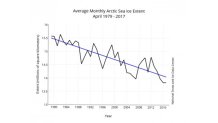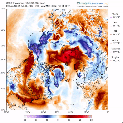GOOD NEWS FOR ALL
With all the partisan fights in Congress, for just about every subject, have you heard the great weather news?
Can you believe it? A bi-partisan bill, already signed into law? You probably haven’t heard about it from most radio and TV news outlets since there was no controversy, no threats, and no lawsuits about it. It is known as the “Weather Research and Forecasting Innovation Act of 2017, H.R. 353, and it became law April 18th.
“This bill requires NOAA to prioritize weather research to improve weather data, modeling, computing, forecasts, and warnings for the protection of life and property and the enhancement of the national economy”
The law is designed to improve things such as:
* Tornado warnings-better “lead times”
* Hurricanes-better forecasts of rapid intensification (a current weakness)
Local
Breaking news and the stories that matter to your neighborhood.
* Hurricanes-better forecasts & communication of storm surges
*Communication research for WATCH and WARNING products
* Longer-range predictions (from two weeks to two years ahead)
Now all we need is more money and smarter planning to get U.S. computer models on par with the world-leading European model. But this is a good start.
WORSE SPRING STORMS DUE TO WARM GULF OF MEXICO?
There has already been a very active start to the 2017 Tornado Season.
The first four months of 2017 have ALL been WAAAY more active than normal for the number of tornadoes. According to the numbers from the Storm Prediction Center, 650 tornadoes have been reported in the U.S. from January 1 to April 30th. That is almost three times the average of the prior three years average of 239!
There are several factors that could help explain that big increase. Weather patterns change all the time, so there can be big differences from year to year in the number of tornadoes. But one constant has been the record warm water temperatures in the Gulf of Mexico. A southerly wind over warm waters leads to record warmth and humidity. Those are two of the ingredients in many tornado “outbreaks”-when large numbers of tornadoes hit in a single day or two.
A common measure of the energy that can lead to severe storms is called CAPE (Convective Available Potential Energy). A higher CAPE is an important ingredient. Here is a great graphic that shows how a warm Gulf leads to high CAPE values, which in turn can lead to an increase in tornadoes.

If a record warm Gulf of Mexico can lead to a huge increase in tornadoes in 2017, what can the continued warming of the Gulf do in the future? Some studies have suggested that there may not be more total DAYS with tornadoes in our warmed future, but that there may be more tornadoes in the big outbreak days. That’s bad news, because many of the strongest and deadliest tornadoes occur on “outbreak days”.
TROUBLE IN THE ARCTIC
After a record warm year for the globe in 2016, many experts predicted that the rate of Arctic ice melt would slow down in 2017. So far, that hasn’t happened. A lot of ice is melting this year, even without the major El Nino that boosted global temperatures last year. Here’s the latest:

If you’ve heard or read about Arctic ice “recovering” at some time in the past few years, it’s just a myth. It can change somewhat from year to year, but the overall trend is clear: down….way down. The extra melted ice does not add to sea level by itself (like an ice cube melting in water doesn’t raise the water level). But more heat is absorbed by the water than the ice that used to be there. That warms the area. And that melts more ice. Which leads to more warming. Which melts even more ice.
It takes a lot of unseasonable warmth to melt so much ice, and they’ve experienced temperatures as high as FIFTY DEGREES above normal this past winter!

What about the ice at the other end of the world-in the Antarctic? You may have heard about increases in that area. Not this year. Record low ice coverage has been reported there, too.

That’s more than just a small drop. And since Antarctica is a land mass, ice melting there does impact sea level rise.
IT’S SHORE BAD TIMING WITH DUNES
I’ve written about dunes several times in the past, and firmly believe that they help protect both the beach and the houses nearby. Margate, NJ has been in the news for years, trying to refuse the offer of free dunes from the state and the U.S. Army Corps of Engineers. They lost that battle (as they should have). But are they, and neighboring beaches being punished for the trouble they caused?
When is the worst time to do a beach replenishment/dune project? In the middle of summer, of course. And guess when this is going to happen? I know Margate caused a lot of aggravation with their protests, but what has Ventnor done to have part of their summer ruined? (A personal note: my father lives in a hi-rise on the beach in Ventnor).

(The beach in Margate: totally flat, with no dunes. Picture courtesy, me)
Originally, the beach project in Ventnor was scheduled for early fall, but now the period covers much of June and part of July. Yes, the part that includes the 4th of July. According to philly.com, “thousand-foot stretches of beaches will be closed at a time, and the noisy pumping of sand through snaking pipes will continue day and night.” Sounds like fun, doesn’t it?
The project in Margate is scheduled after the 4th of July weekend, but will occur during part of the peak of the summer season. The New Jersey DEP (Department of Environmental Protection) says the inconvenient schedule has nothing to do with the expensive court battle waged by Margate. Regardless, it probably will feel like punishment to residents and visitors.



